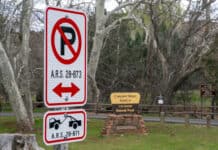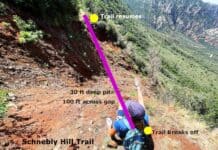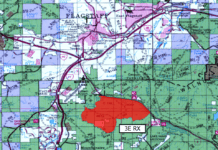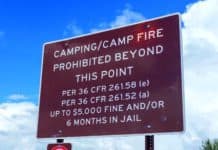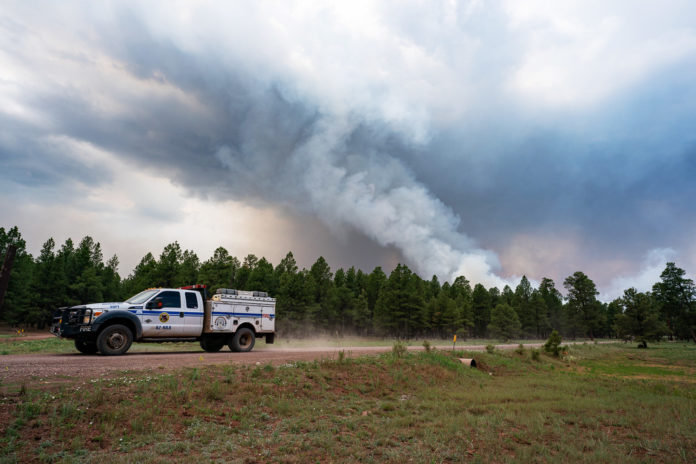
On Wednesday, Nov. 17, Sedona residents and visitors were beset with a cloud of wildfire smoke that settled over Sedona and the northern Verde Valley late in the evening on Tuesday, Nov. 16.
This excess smoke was produced by prescribed burns between Sedona and Flagstaff. One was the 669-acre unit of the Crater Sinks project west of State Route 89A and due west of the Kachina Village subdivision. The other was the 3E project of 256 acres located east of Interstate 17 and about 3 miles southeast of Flagstaff’s Pulliam Airport.
While relatively small in scope, less than 1,000 acres combined, prevailing southerly winds pushed the smoke into our region.
We warned our readers that these burns were planned in a story posted to our website and our Facebook page on Friday, Nov. 12.
The USFS issues notifications of upcoming prescribed burns via press releases we either get into our print edition if sent by deadline or online at redrocknews.com if sent to us too late. Burns happen throughout the year, excluding fire season from May to the start of the summer monsoon in late June or early July.
Residents who want to be informed directly can follow the Coconino National Forest’s Twitter account @CoconinoNF or “like” and follow the Coconino National Forest’s Facebook page at facebook.com/coconinonf.
For decades the U.S. Forest Service’s plan of attack for wildfires was to aggressively pursue, engage and extinguish them as soon as they were found.
The downside being that many environments in the American West require naturally occurring wildfire from lightning strikes to thin out landscapes. For hundreds of thousands of years, if not longer, natural wildfires would thin fire fuels and lessen the damage when major fires came through an area.
Some tree species need fire to survive: In environments where hot, fast moving fires are frequent, some pine species have developed very thick, hard cones that are literally glued shut with a strong resin, according to the National Forest Foundation. These “serotinous” cones can hang on a pine tree for years, long after the enclosed seeds mature. Only when a fire sweeps through, melting the resin, do these heat-dependent cones open up, releasing seeds that are then distributed by wind and gravity.
Modern human fire suppression efforts of the last hundred years or so interfered with this natural process in creating the types of landscapes we see today: Heavily dense and ready to burn quickly and intensely should a spark set them off. Climate change aside, our wildfires now burn bigger, hotter and faster than 100 years ago.
Realizing the error, the U.S. Forest Service and fire management officials decided more recently to use prescribed burns to artificially manage what should be a natural process, burning out excess undergrowth and allowing the landscape to revitalize itself.
The unfortunate side effect is we deal with wildfire smoke from prescribed burns, but a day or two of smoky skies is preferable to weeks of heavy smoke from a raging wildfire that threatens homes and blackens whole hillsides, then later clogs waterways with burned debris and runoff.
In 2020, as COVID-19 was in full swing, the USFS planned a brief return toward fast suppression methods to reduce wildfire smoke as we civilians dealt with a deadly respiratory disease that was already making it hard to breathe for ill patients. With COVID-19 abating and having a better idea about what COVID-19 does to the body and how to treat it, the USFS and forest officials have resumed normal fire efforts, including occasional controlled burns.
We’ll post controlled and prescribed fire information on our website, as well as information about how to protect yourself and limit exposure if you have existing respiratory problems.
Christopher Fox Graham
Managing Editor




